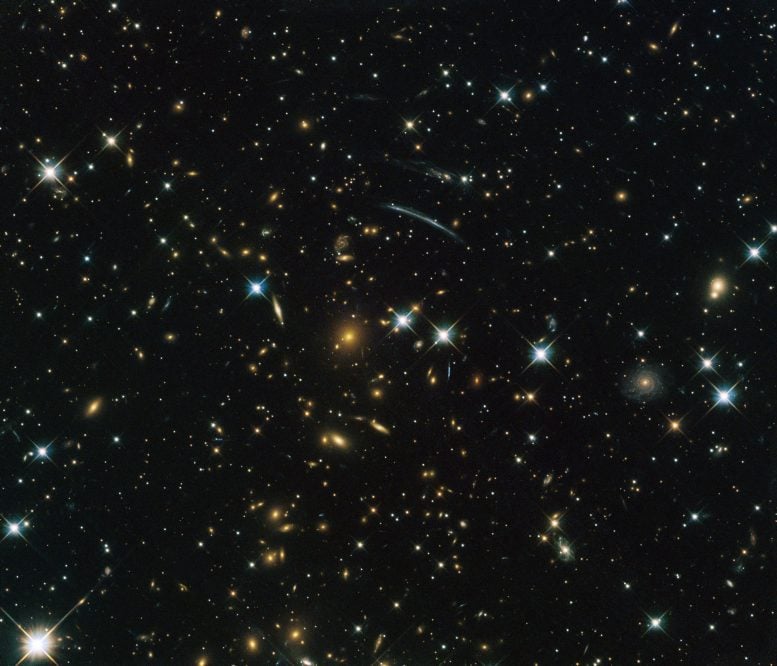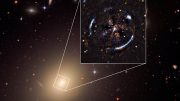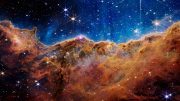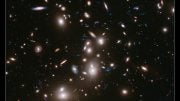
This image shows the galaxy cluster PLCK G004.5-19.5 5 billion light-years away. Credit: ESA/Hubble & NASA, RELICS; Acknowledgement: D. Coe et al.
This image from the NASA/ESA Hubble Space Telescope shows the galaxy cluster PLCK G004.5-19.5. It was discovered by the ESA Planck satellite through the Sunyaev-Zel’dovich effect — the distortion of the cosmic microwave background radiation in the direction of the galaxy cluster, by high energy electrons in the intracluster gas. The large galaxy at the center is the brightest galaxy in the cluster and the dominant object in this image, and above it a thin, curved gravitational lens arc is visible. This is caused by the gravitational forces of the cluster bending the light from stars and galaxies behind it, in a similar way to how a glass lens bends light.
Several stars are visible in front of the cluster — recognizable by their diffraction spikes — but aside from these, all other visible objects are distant galaxies. Their light has become redshifted by the expansion of space, making them appear redder than they actually are. By measuring the amount of redshift, we know that it took more than 5 billion years for the light from this galaxy cluster to reach us. The light of the galaxies in the background had to travel for even longer than that, making this image an extremely old window into the far reaches of the Universe.
This image was taken by Hubble’s Advanced Camera for Surveys (ACS) and Wide-Field Camera 3 (WFC3) as part of an observing program called RELICS (Reionization Lensing Cluster Survey). RELICS imaged 41 massive galaxy clusters with the aim of finding the brightest distant galaxies for the forthcoming NASA/ESA/CSA James Webb Space Telescope (JWST) to study.









Be the first to comment on "Hubble Telescope Views ‘A Window Into The Cosmic Past’"